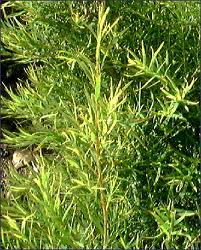The tea tree’s leaves have been used to treat skin infections, especially toenail fungus by aboriginal people from Australia for centuries. Tea tree oil is extracted from the leaves of this plant which grown in Australia or New Zealand. High quality tea tree oil is usually available in health food or specialty stores.
Tea tree oil, an natural antiseptics
Tea tree oil is known as one of the most beneficial natural antiseptics, it can combat a wide variety of infections and ailments. Tea tree oil contains terpinen-4-ol, an active ingredient able to combat bacteria and fungi. So it is used to treat cuts, scrapes, and other minor skin wounds and irritations. Moreover, it reduces the risk of scarring in many applications. It also has the ability to quickly bonds with natural oils available in the skin, encouraging the formulation of a chemical barrier on the skin and preventing the growth of fungi and other unhealthy organisms.
Tee tree oil and toenail fungus




 E
E specially, tea tree oil is efficient for the treatment of toenail fungus. First, toenail fungus is only seen as a discoloration on the tip of the toenail. Gradually, it grows and spreads until the entire toenail becomes thick and yellow with crumbling edges. Eventually, the toenail will form a distorted shape, the color may become green, brown, or black, and the toes may begin to emit a foul odor as the nail falls off if it is left treatment. You also may bear some pain in the infected toes.
specially, tea tree oil is efficient for the treatment of toenail fungus. First, toenail fungus is only seen as a discoloration on the tip of the toenail. Gradually, it grows and spreads until the entire toenail becomes thick and yellow with crumbling edges. Eventually, the toenail will form a distorted shape, the color may become green, brown, or black, and the toes may begin to emit a foul odor as the nail falls off if it is left treatment. You also may bear some pain in the infected toes.
There are many treatments available to eradicate the fungus that causes this unpleasant condition but tea tree oil is proven to be gentler on the skin than prescription medications. However, it may irritate sensitive skin, especially around the eyes.
How to use tea tree oil?
Before using this product, swab some of the oil on the inner arm. If the skin becomes red, swollen, or itchy, do not use it on other parts of the body.
Do not dilute the oil if you want to treat all areas of the toenail and toe that are affected by the fungus.
Use tea tree oil two to three times daily for six months.
Continue the treatment daily until the infected portion of the toenail has completely grown out.
Do not miss the treatment even one day because the fungus will have time to to replicate and you need require an extension of treatment time.
Post-treatment
Keep toenails clean and trimmed.
Wear socks that allow the feet to breathe, such as those made from natural fibers such as cotton.
In case you have exceptionally sweaty feet, give them ample time to dry out during the day, if possible.
Never pick at toenails or other skin around the toenails.
Discontinue using toenail polish as it can trap moisture under the polish and encourage the growth of fungus.
Keep the hands clean, especially after contacting fungus that may reside on other toenails.

